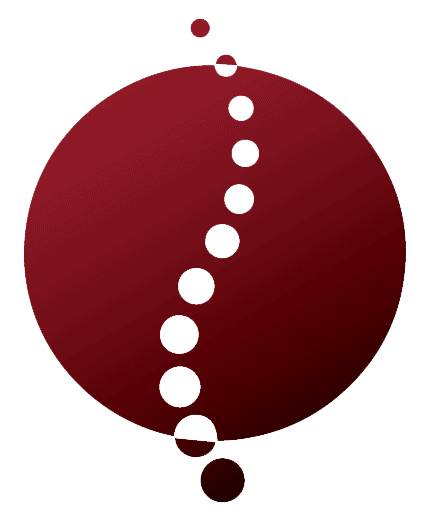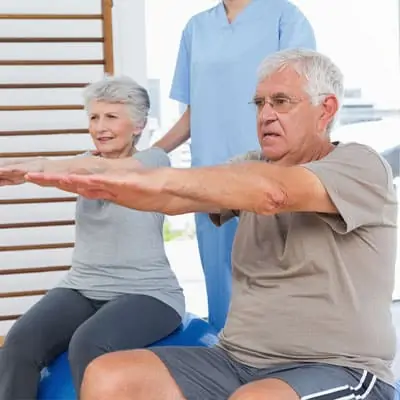Understanding Cerebral Palsy Physiotherapy
What is Cerebral Palsy?
Cerebral palsy (CP) is a neurological disorder caused by a non-progressive brain injury or malformation that occurs while the child’s brain is under development. CP primarily affects body movement, muscle control, coordination, reflex, posture, and balance.
| Parameter | Description |
|---|---|
| Cause | Brain injury/malformation during development |
| Main Effects | Muscle control, movement, coordination |
| Incidence | 1.5 – 4 per 1,000 live births |
The symptoms and severity of CP can vary widely. Some individuals might have difficulty walking, while others may struggle with fine motor tasks like writing. Understanding the diverse nature of CP is crucial for developing effective physiotherapy plans.
Role of Physiotherapy in Cerebral Palsy Management
Physiotherapy plays a vital role in managing cerebral palsy. Our approach to neuromuscular rehabilitation aims to enhance mobility, strength, and overall function for individuals with CP.
Key Goals of Physiotherapy for CP
- Improving Mobility and Function: Through targeted exercises, we aim to strengthen muscles and improve motor skills.
- Enhancing Strength and Coordination: Regular physical activity helps in developing muscle tone and coordination, essential for daily activities.
- Managing Pain and Discomfort: Techniques like spasticity management and functional electrical stimulation (FES) can help alleviate pain and reduce muscle stiffness.
| Goal | Description | Examples |
|---|---|---|
| Mobility & Function | Strengthening muscles, improving motor skills | Exercises, gait training |
| Strength & Coordination | Developing muscle tone and coordination | Balance exercises, functional training |
| Pain Management | Reducing pain and stiffness | Spasticity management, FES |
Our physiotherapy interventions are tailored to each individual’s needs, focusing on specific challenges they face. Physiotherapy not only enhances physical capabilities but also boosts confidence and independence. By integrating physiotherapy with other forms of therapy, we aim to provide a comprehensive care strategy.
For more information on related therapeutic approaches, visit our articles on stroke rehabilitation, balance and gait training, and parkinsons disease rehabilitation.
Benefits of Physiotherapy for Cerebral Palsy
Physiotherapy plays a crucial role in managing cerebral palsy, offering numerous benefits aimed at improving the overall quality of life for individuals affected by this condition.
Improving Mobility and Function
One of the primary goals of cerebral palsy physiotherapy is to enhance mobility and functional abilities. Objective assessments and tailored exercises enable individuals to improve their range of motion, gait, and overall physical capabilities. This can involve:
- Stretching exercises to reduce muscle stiffness
- Strength training to build muscle groups critical for movement
- Balance and gait training to enhance stability and walking patterns
| Improvement Area | Methods Used |
|---|---|
| Range of Motion | Stretching, joint mobilization |
| Gait and Stability | Balance and gait training |
| Functional Movement | Functional electrical stimulation (FES) |
Enhancing Strength and Coordination
Enhancing strength and coordination is vital for better managing daily activities. Physiotherapy incorporates exercises and techniques aimed at building muscle strength and improving neuromuscular coordination. This includes:
- Resistance training using weights or resistance bands
- Coordinative exercises to improve motor planning and execution
- Functional tasks that mimic daily activities to build transferable skills
| Exercise Type | Example Activities |
|---|---|
| Resistance Training | Weight lifting, resistance band exercises |
| Coordinative Exercises | Task-specific training, proprioceptive drills |
| Functional Tasks | Repetitive practice of daily activities |
Managing Pain and Discomfort
Individuals with cerebral palsy often experience pain and discomfort due to muscle tightness, spasticity, and joint issues. Physiotherapy aims to alleviate these symptoms through various methods:
- Manual therapy techniques to mobilize soft tissue and joints
- Pain management strategies including heat, cold application, and electrotherapy
- Relaxation and stretching routines to reduce muscle tension and pain
| Pain Management Method | Techniques Involved |
|---|---|
| Manual Therapy | Massage, joint mobilization |
| Pain Management | Heat/cold application, electrotherapy |
| Stretching Routines | Static and dynamic stretching, relaxation exercises |
By integrating these physiotherapy strategies, we can significantly enhance the well-being of those with cerebral palsy.
Discover more about the benefits of tailored exercises in neurological conditions in our articles on stroke rehabilitation, multiple sclerosis physiotherapy, and parkinsons disease rehabilitation.
Tailored Physiotherapy Approaches
In providing comprehensive cerebral palsy physiotherapy, it is crucial to adapt the treatment to each individual’s unique needs. Below, we delve into the primary components of these customized approaches.
Individualized Treatment Plans
Every individual with cerebral palsy (CP) has different physical abilities and challenges. Therefore, creating personalized treatment plans is essential for effective care. These plans are developed considering factors like the severity of CP, age, overall health, and specific goals.
By conducting thorough assessments and collaborating with other healthcare professionals, we can design a cohesive and targeted approach. This ensures that each individual’s specific needs and abilities are addressed, leading to the most effective therapy outcomes.
| Factor | Consideration |
|---|---|
| Severity of CP | Mild, Moderate, Severe |
| Age | Infant, Child, Teen, Adult |
| Health | Comorbidities, Overall Fitness |
| Goals | Mobility, Independence, Pain Management |
Targeted Exercises and Techniques
Specific exercises and techniques play a pivotal role in managing cerebral palsy. These activities are chosen based on the individual’s unique treatment plan and aim to improve strength, coordination, and mobility.
Commonly used exercises may include:
- Stretching and Flexibility Exercises: To reduce muscle stiffness and improve range of motion.
- Strengthening Exercises: To build muscle strength and endurance.
- Balance and Coordination Exercises: To enhance stability and overall functional abilities (balance and gait training).
Each of these techniques helps in addressing particular challenges faced by individuals with CP. For example, strengthening exercises might focus on core muscles to improve posture and reduce the risk of falls.
Assistive Devices and Technology
The use of assistive devices and advanced technology can significantly enhance the effectiveness of cerebral palsy physiotherapy. These tools support individuals in achieving greater independence and improving their daily functional abilities.
Common assistive devices and technologies include:
- Orthotic Devices: Braces and splints to support joints and improve alignment.
- Mobility Aids: Walkers, wheelchairs, and other tools to enhance movement.
- Technology-Assisted Therapies: Robotic devices, virtual reality systems, and functional electrical stimulation (FES) to provide additional support and motivation during therapy.
| Device/Technology | Purpose |
|---|---|
| Orthotic Devices | Joint Support, Alignment |
| Mobility Aids | Enhanced Movement |
| Robotic Devices | Support During Therapy |
By integrating these customized approaches, we can offer the most effective cerebral palsy physiotherapy, ensuring each individual achieves their highest potential. For more information on related neurological physiotherapy topics, you can explore our articles on stroke rehabilitation or neuroplasticity training.
Holistic Approach to Well-Being
A comprehensive approach to cerebral palsy physiotherapy goes beyond physical treatments. It includes various aspects that contribute to overall well-being: nutritional support, emotional and mental health care, and family and caregiver involvement.
Nutritional Support
Proper nutrition plays a vital role in managing cerebral palsy and supporting the benefits of physiotherapy. A balanced diet ensures that individuals receive the essential nutrients needed for muscle function, bone health, and overall physical development.
It’s crucial to tailor nutritional plans to meet the specific needs of each individual. This may involve consulting with a dietitian who specializes in neurological conditions. A nutritious diet can help manage weight, reduce constipation, and boost energy levels, which in turn, supports better participation in physiotherapy sessions.
| Nutritional Element | Importance for Cerebral Palsy |
|---|---|
| Proteins | Muscle repair and growth |
| Calcium | Bone health |
| Fiber | Digestive health |
| Vitamins and Minerals | General well-being and immune support |
Emotional and Mental Health Care
Emotional and mental health are just as important as physical health when it comes to cerebral palsy physiotherapy. Psychological support can greatly enhance the quality of life for those with cerebral palsy and their families.
Incorporating mental health care into the physiotherapy program helps address issues such as anxiety, depression, and stress. Techniques may include counseling, cognitive-behavioral therapy, and mindfulness practices. Support groups and community resources can also provide valuable emotional outlets.
Family and Caregiver Involvement
Family and caregivers are integral to the success of cerebral palsy physiotherapy. Their involvement can make a significant difference in the effectiveness of treatment plans and overall well-being.
Training and educating family members and caregivers ensures they are well-equipped to support the individual’s needs. This includes understanding daily exercises, being aware of signs of discomfort, and knowing how to use assistive devices correctly.
Involving families in goal-setting and progress tracking fosters a supportive environment, making it easier to celebrate milestones and achievements together. For more insights on adapting treatment plans, visit our section on adapting treatment as needed.
| Support Aspect | Role |
|---|---|
| Education | Understanding exercises and treatments |
| Emotional Support | Encouragement and motivation |
| Practical Assistance | Daily care and use of assistive devices |
| Communication | Collaborating with healthcare providers |
A holistic approach to cerebral palsy physiotherapy ensures that all aspects of well-being are addressed, leading to more comprehensive and effective treatment outcomes. Explore further resources like neuromuscular rehabilitation and spasticity management for additional support strategies.
Progress Monitoring and Adjustments
Tracking the progress of physiotherapy for individuals with cerebral palsy is a critical aspect of effective treatment. This allows us to make informed adjustments and celebrate achievements along the way, ensuring the best possible outcomes.
Tracking Progress and Milestones
Regular monitoring helps us to understand how well the patient is responding to the treatment plan. We employ various methods to track progress, including physical assessments, patient feedback, and observational data.
| Metric | Frequency of Assessment | Tools Used |
|---|---|---|
| Range of Motion | Weekly | Goniometer |
| Muscle Strength | Bi-weekly | Dynamometer |
| Mobility and Gait | Monthly | Video Analysis |
| Pain Levels | Daily | Pain Scale |
These metrics allow us to identify improvements and areas needing adjustment, ensuring a dynamic and responsive approach to care.
Adapting Treatment as Needed
Flexibility in treatment plans is vital for addressing the evolving needs of patients with cerebral palsy. By continuously analyzing progress data, we can make necessary adjustments to the physiotherapy regimen. This can include altering the intensity, frequency, or type of exercises employed.
Adapting treatment plans also involves integrating new techniques and assistive devices as they become appropriate. For instance, introducing functional electrical stimulation (fes) when needed or incorporating balance and gait training exercises to enhance stability.
Goal Setting and Celebrating Achievements
Setting realistic, personalized goals is key to maintaining motivation and focus throughout the physiotherapy process. These goals are established based on the individual’s capabilities and aspirations. They can range from improving the ability to perform daily tasks independently to more complex mobility objectives.
| Goal | Time Frame | Achievement Indicator |
|---|---|---|
| Improve balance | 3 months | Maintain balance for 30 seconds |
| Increase walking distance | 6 months | Walk 500 meters without support |
| Reduce pain levels | 1 month | Report pain score reduction by 2 points |
Celebrating achievements, no matter how small, is essential for positive reinforcement and encouragement. Acknowledging progress helps to build confidence and fosters a positive outlook towards ongoing therapy.
By tracking progress, adapting treatments, and setting meaningful goals, we strive to provide comprehensive and effective cerebral palsy physiotherapy tailored to individual needs. For more on neurological physiotherapy approaches, explore our articles on stroke rehabilitation and multiple sclerosis physiotherapy.
Finding the Right Physiotherapy Team
Finding the appropriate physiotherapy team is essential for effective cerebral palsy management. The right team can significantly enhance the quality of life for individuals with cerebral palsy by providing targeted, comprehensive care.
Qualifications and Experience
When selecting a physiotherapy team, it’s crucial to consider their qualifications and experience. Look for physiotherapists who are licensed and have specialized training in neurological physiotherapy. Many professionals in this field may have additional certifications or advanced degrees in areas relevant to cerebral palsy.
Experience matters as well. A team with a substantial history of working with cerebral palsy patients will have a deeper understanding of the condition and its complexities. This expertise can lead to more effective treatment plans tailored to individual needs.
Key Qualifications to Look For:
- Licensed Physiotherapist
- Specialized Training in Neurological Physiotherapy
- Advanced Certifications (e.g., Neuro-Developmental Treatment)
Communication and Collaboration
Effective communication and collaboration within the physiotherapy team are vital. A team that works well together can better coordinate care and make informed decisions. We encourage looking for a team that prioritizes open communication, not just within their own group but also with the family and other healthcare providers.
Collaboration extends to involving patients and their families in the treatment process. Clear, empathetic communication helps ensure everyone understands the goals, the methods, and the progress being made. You might find additional insights on team collaboration in our article on stroke rehabilitation.
Supportive Environment for Optimal Results
A supportive environment plays a significant role in the success of cerebral palsy physiotherapy. The right team will create an atmosphere that fosters trust, comfort, and motivation. From state-of-the-art facilities to personalized care plans, every aspect of the environment should be geared towards helping the patient achieve their best possible outcomes.
Look for teams that offer:
- Comprehensive Initial Assessments
- Regular Progress Monitoring
- Adaptable Treatment Plans
Creating a supportive environment also means being responsive to the emotional and psychological needs of the patient. Encouraging a holistic approach, integrating mental and emotional support, can be very beneficial.
Combining these elements—qualifications, communication, collaboration, and a supportive environment—will help ensure you find the right physiotherapy team for cerebral palsy management. Explore topics like multiple sclerosis physiotherapy and parkinsons disease rehabilitation to understand how tailored approaches can be beneficial across various conditions.











